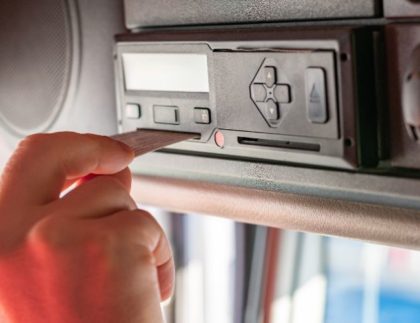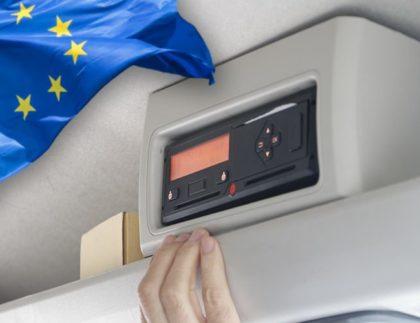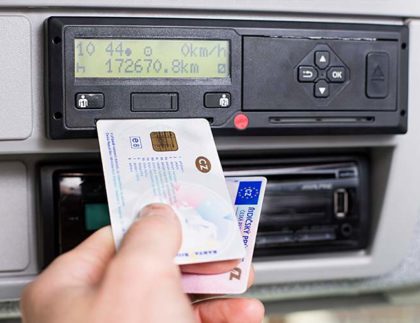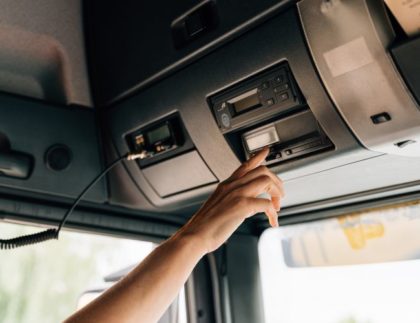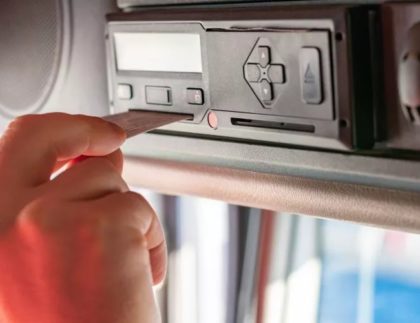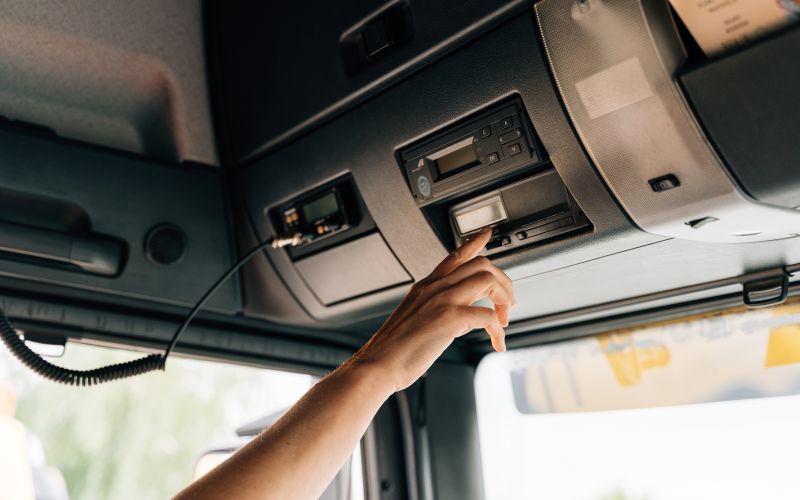

As increased demands emerge for drivers’ working time monitoring and tachograph complexity is on the raise, transportation and logistics companies are facing new challenges. In this article, Inelo experts share their observations and recommendations on the most common tachograph problems. Review these tips to avoid severe consequences during an inspection. Welcome!
Known errors in digital tachographs:
- “The card just suddenly ejected from the tachograph”, also known as “Last card session closed incorrectly” error – a very common irregularity that requires verification before settling drivers’ working time. The error may be caused by a physical problem with the driver card or tachograph, leading to incorrect data recording.
Usually the scenario is as follows: the driver card is spontaneously ejected from the tachograph and the data recorded on the card is incorrect. This often causes individual activities to be recorded in a manner inconsistent with the actual state, for example, the entire time is classified as rest (even though the driver was actually driving the vehicle) or continuous driving is recorded for e.g. 20 hours, even though the driver was performing other activities, also resting. In some cases, after placing the card back in the tachograph, the device asks for manually recording the entire period during which the driver was driving.
An example from the Inelo Tachoscan software:
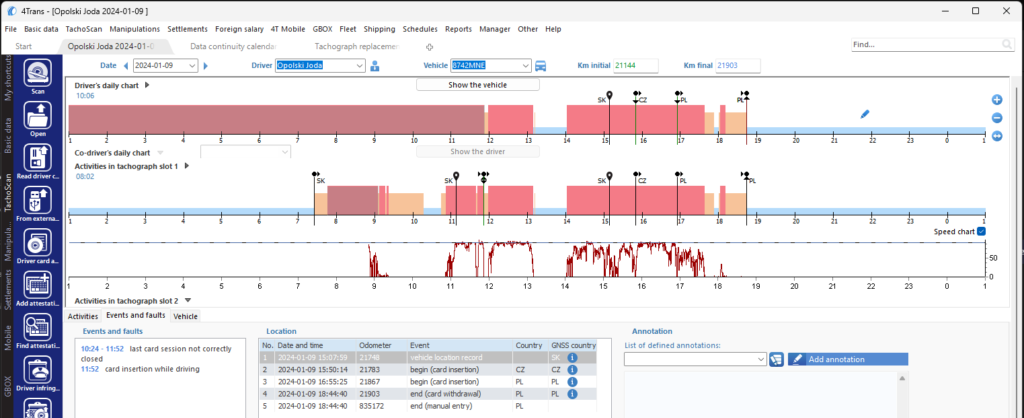
As you can see in the example above, the driver card recorded continuous driving from 01:00 a.m. to 11:52 a.m., which actually did not happen. The tachograph data is correct, so it should be included in the settlement. This error may be verified, among others, based on manipulation warnings from the Tachoscan software.
Time travel or automatic tachograph calibration based on erroneous GNSS data – the tachograph, relying on erroneous time data from the GNSS location, independently changes the UTC time used for recording data. In such cases we usually see “time travel”, e.g. skipping a year forward. Over 1-2 days data is suddenly registered in the future and then everything returns to normal. Unfortunately, without OSNMA technology in tachographs, such situations cannot be prevented. This also causes problems in the future (the driver should replace the card – there is a risk that in a year’s time these days will be recorded twice!). Fortunately, such cases are very rare.

GNSS position freezing – occasional situations in which the tachograph does not update the GNSS position. The device then reports lack of GNSS signal. If the position freezes frequently and it is not due to, for example, driving through a tunnel, a visit to a tachograph service center is necessary.
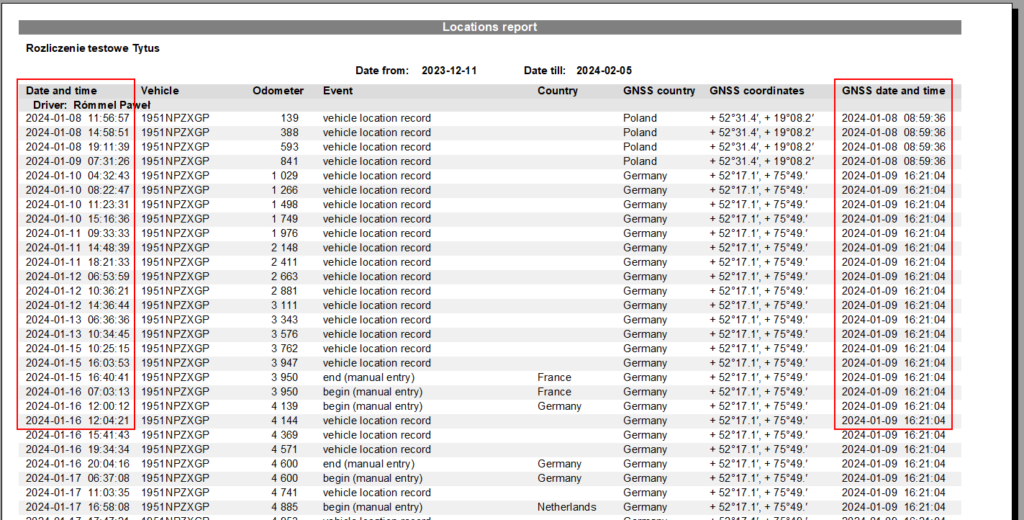

Technical section certificate error in VDO G2V2 tachographs – there is an incorrect technical section signature in the file downloaded from the VDO G2V2 tachograph and it cannot be uploaded to the program.

The problem also occurs when trying to print technical data from the vehicle. The error occurs if the registration number was entered for the first time into the tachograph using a company card. The manufacturer has diagnosed the problem and issued a notice on thei.
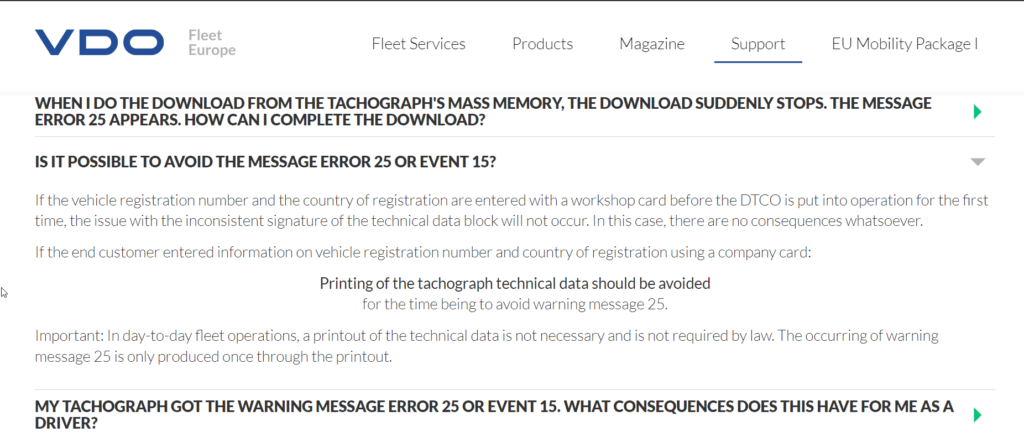
- “Equipment sabotage” message, “GNSS anomaly” error in Stoneridge G2V2 tachographs – the manufacturer has issued a service notification on how to deal with these errors. The information is available in English here >>>.
Other potential issues related to tachographs and the upcoming deadline for replacing tachographs in international transport:
- no automatic recording of border crossings in VDO G2V2 tachographs using G1 and G2V1 driver cards;
- reading G2V2 driver cards with legacy devices – for example without border crossing sections;
- limited capacity of G1 and G2V1 cards in case of inspections dating back 56 days from 1 January 2025;
- corrupted certificates for the individual days in data from Stoneridge tachographs, affecting days between locking the tachograph with the company card and subsequent insertion of the driver card;
- remote reading option blocked by some VDO G2V1 tachographs if an invalid company card is used.
Summary
In order to reduce the risk of issues during roadside inspections, it is important to ensure that the tachograph is functioning properly and to react quickly to any potential errors. It is important to regularly analyze tachograph and driver card data to verify its accuracy.
If there are problems with the tachograph, it is best to contact the service center responsible for the particular make of devices. Having confirmation of proper device operation verification is usually an important matter. It is also recommended to train drivers on how they should behave in such situations. In order to respond quickly to technical problems, it is also helpful to monitor official communications from manufacturers and keep in touch with tachograph service centers.
We work actively to minimize tachograph problems, which allows our customers to maintain the continuity of transport operations and avoid unforeseen costs. These and other problems are discussed on multiple occasions, among others during meetings organized by CORTE – building problem awareness among inspectors and trying to find the best solutions.
You are also welcome to attend our free webinars, during which we share the knowledge necessary in this area and more.


